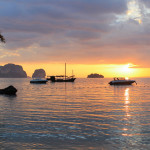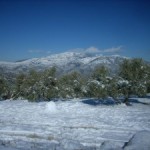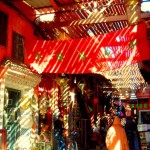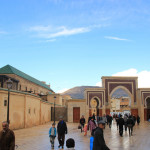
Artist stall at the cultural festival
1) The annual Sauti Za Busara festival is a must see in Zanzibar!
Every February, musicians, artist and craftsmen come from all over the vast African continent to set up booths and take the stage for this six-day music, art and cultural extravaganza.
By day, browse the artisan shops for jewelry, paintings and unique gifts. By night, view documentaries by emerging filmmakers and directors, then dance and sway the night away to live African music. If you still have stamina for the after-party, an array of international DJ’s spin into the morning hours beneath the vivid constellations.
The Sauti Za Bursura festival is truly a multicultural affair, bringing locals, tourists and Afro-files together. It was here last year where I first experienced the sultry pleasure of Tarab music, a mixture of Arabic beats, Arabic, and soulful Swahili. I was even fortunate enough to see the grand dame of Zanzibari Tarab music, Bi Kidude perform live. Well into her 90’s, Kidude was sassy and sharp, wowing the audience with her presence, style and performance.
This year the festival will take place from February 11th – 16th. For information email: busara@zanlink.com or call + 255 24 223 2423.
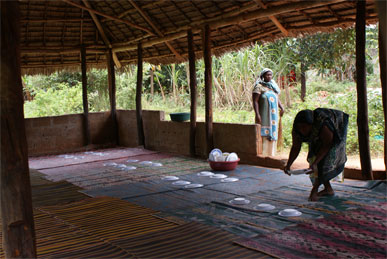
Sample the local food on a spice tour
2) Go on a Spice Tour!
One of the most sacred stops along the Arabic trade route, Zanzibar has earned itself the title “Spice Island.” The land here is fertile and rich, allowing for the cultivation of a plethora of herbs and spices, endemic and imported. It is easy to arrange a Spice Tour, as there are numerous companies that advertise in almost every hotel and hostel. Most tours are approximately four hours and depart from the capitol Stone Town. The tour I took was very thorough and intimate. I traveled with a group of eight. Our tour guides were extremely knowledgeable. Having studied Ayurveda, it was captivating to see how spices were used in Zanzibar both medicinally, and for culinary purposes. The tour does require a bit of hiking, so be prepared to sweat. The tour highlights were the sample saps, spices and exotic fruits that we were allowed to taste and the aromatic and delicious lunch prepared for us by some of the women in the village.

3) Visit Chumbe Island Coral Park!
Chumbe Island Coral Park is paradise. I have never seen so many vibrant shades of green. The park is particularly unique because the island exists atop a colony of fossilized coral. Extremely fertile, an entire forest has sprung up boasting a variety of flora. Tours are inexpensive and informative. The park focuses on preservation and education. Chumbe Island Coral Park was a peaceful sanctuary. We were led through jungle canopies and over streams. The park is an amazing opportunity to take photographs of both plant species and animals. Monkeys called out as they swung above us from branch to branch. There were several varieties of butterflies, reptiles and birds. No, I didn’t see any snakes, but as my guide kept reminding us “they are all around us- watching.”
Chumbe Island Coral Park
P.O. Box 3203, Zanzibar/ Tanzania
Telephone: + 255 – (0) 24-2231040
Email: ask@chumbeisland.com
And of course, once you have had your adventure, take the time to lie out and soak up the rays. The beaches are absolutely phenomenal. The Indian Ocean is warm, pristine and gentle, but be warned, sea urchins are ubiquitous.


